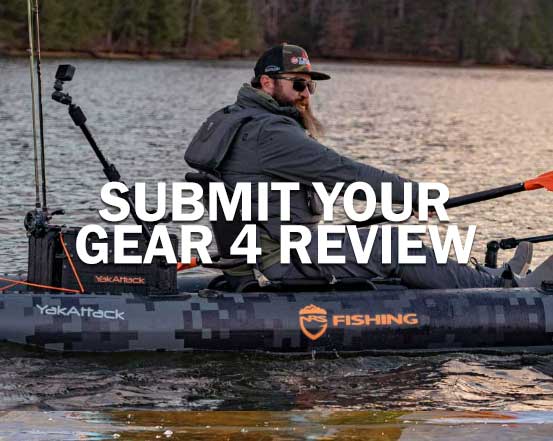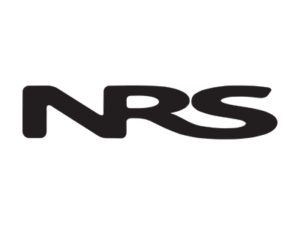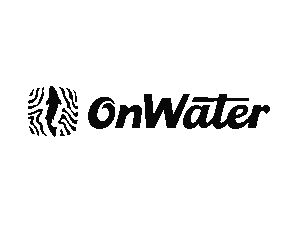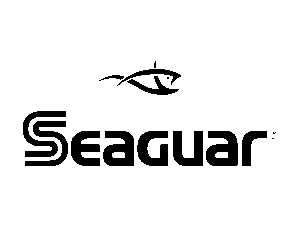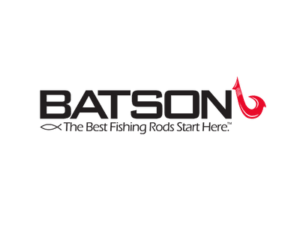Sup everyone? Today is all about getting new paddle boarders familiarized with the basics of the craft. This article is about how to launch a SUP, how to stand up on the paddle board, how to paddle while standing, and how to get back on your paddle board. If you've just purchased your first SUP, or are in the market and want to get an idea of what you're in for, then I hope you enjoy this quick-start guide to paddle boarding.
Do I need a life jacket to paddle board?
Stand up paddle boards are considered a vessel by the U.S. Coast Guard, which means that you need to wear a life jacket if you're in a swimming or surfing zone. There are two main options that will satisfy this requirement.
Inflatable PFD vs Vest PFD
For strong swimmers, you can use an inflatable PFD. The inflatable pfd clips around your waist like a fanny pack. Whenever you need it, you just pull the tab and it self-inflates. If you're not a confident swimmer, then you'll probably want to go with a traditional, vest-style life jacket. I recommend getting one that is specifically designed for paddling. This will give you complete freedom of movement when you're on your SUP.
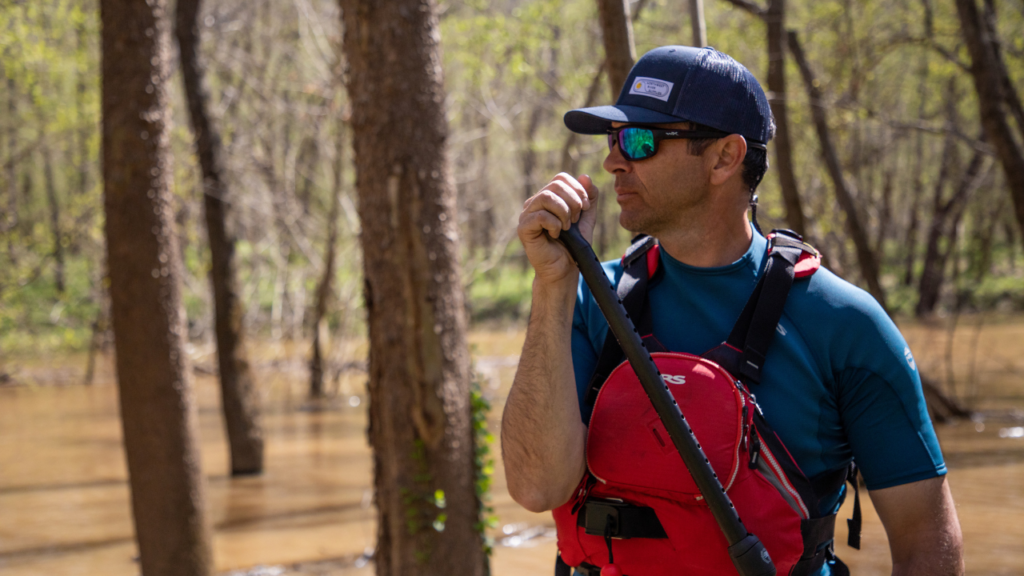
Do you need a paddle board leash?
It's a good idea to use the ankle leash while stand up paddle boarding. Except when you're paddle boarding on flowing rivers, in case it gets snagged on something. Otherwise, every board will (or should) have an attachment point at the tail for one end of the leash. Then then the velcro end simply loops around one of your ankles. This is important because when you fall off, the board can get away from you quickly if there's a bit of current or wind. You don't want to get caught far from shore and with no other option than to swim it in.
How to launch a paddle board
The best places to look for are gently sloping shorelines where you can just walk into about shin or knee deep depth – deep enough so that the fins on the bottom of the board aren't hitting the ground. You can then work your way onto the board, on all fours, with a knee on either side of the center carry-handle. Take a couple of strokes from your knees to clear the shore and then you can focus on standing up in the open water.
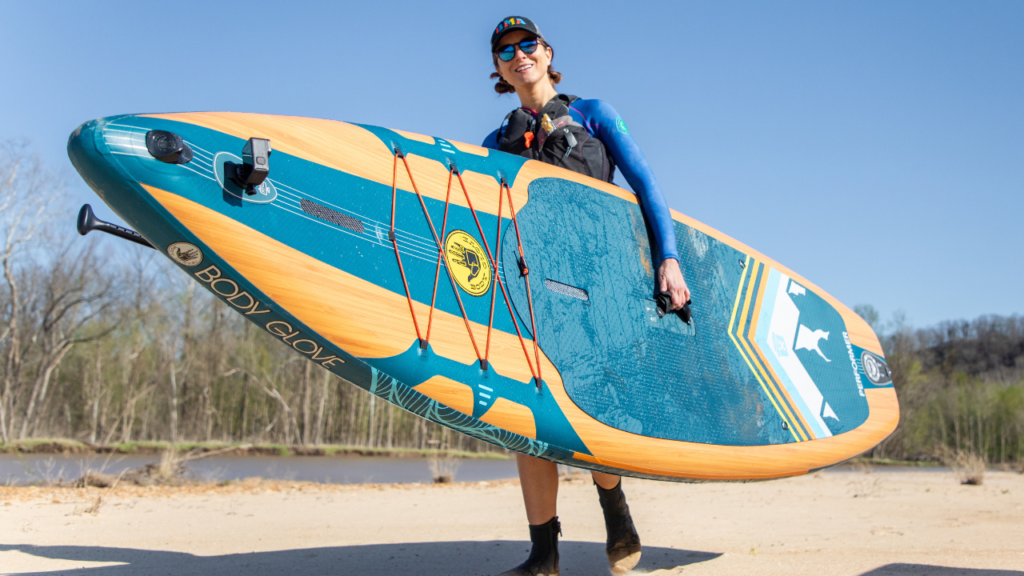
Is it hard to stand up on a paddle board?
It can take a little getting used to, but here's a simple tip to make it easier. From your knees, hold the paddle in front of you. Then one-at-a-time, put your foot in the same spot that your knee just was so that you have about a shoulder-width stance – and then stand on up. Once you hone your ninja skills, you can start from the same position on your knees. Holding the paddle in front of you, now pop both feet into place at the same time.
What is the trick to paddle boarding?
Proper stand up paddling technique begins with an active stance. This means keeping your knees slightly bent while standing up straight. Your hands should also be slightly more than shoulder-width apart on the paddle. In terms of paddle length, you want it to be about 6 to 8 inches taller than you are. Most paddles are adjustable, which makes this an easy spec to achieve. And then when it comes to actually taking a forward stroke, the idea is to plant the blade of your paddle fully into the water, as far forward as you can comfortably reach, and with your paddle shaft as vertical as possible. This combination will produce the maximum forward propulsion for your board. If your paddle isn't vertical then the board will turn significantly to the opposite side every stroke you take.
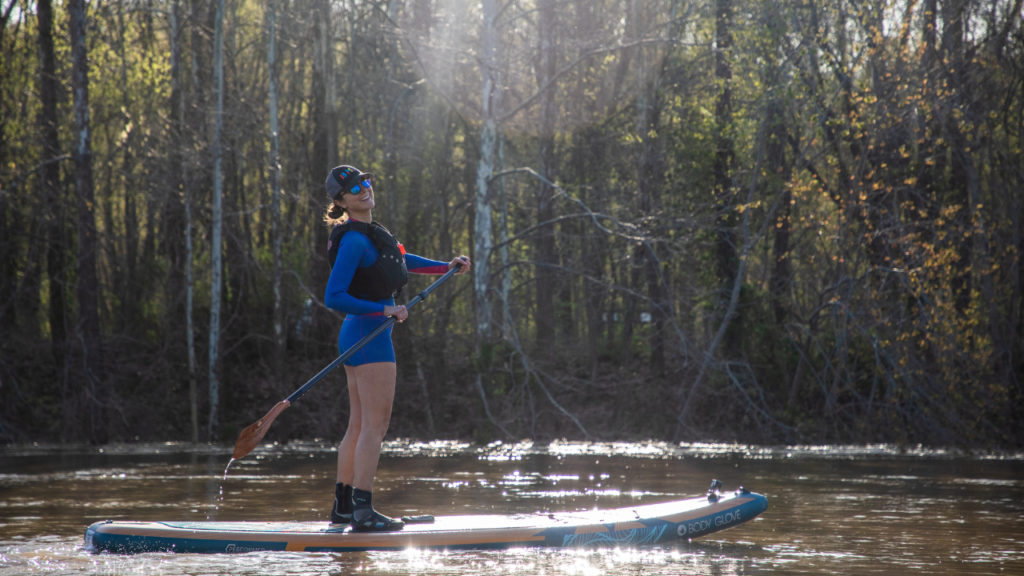
How do you steer on a paddle board?
Inevitably, your SUP will turn a little bit with each forward stroke. There are a couple of ways this can be managed. First off, you can simply change your grip and regularly switch which side you paddle on. You can also do a cross-stroke, which is a more advanced move, whereby you paddle on opposite sides of the board while keeping the same grip. The advantage to this method is that it's a lot quicker to execute. The disadvantage is that it's not as powerful compared to a full stroke on the opposite side with adjusted hands.
How do you get back on a paddleboard if you fall off?
Well, for starters, I would encourage everyone to approach this question not as an “if” but as a “when.” When you fall off your SUP you have a few options for getting back on. First, you can simply swim to shore, towing your board with your ankle leash, and then relaunch in the same way I previously mentioned. If this is your preferred method then you just have to make sure you always paddle close enough to shore so that you can comfortably make the swim.
The other option is to remount from the water. For this approach it's helpful to stow your paddle in the deck bungees that many SUPs come with. If yours doesn't have these, then you can just hold it in one hand. You can then get back on from either the tail or the side of the board.
If approaching from the side, use the center carry-handle to pull your chest up onto the board. From the tail, you'll use your hands to push down on the board, giving yourself enough leverage to once again get your chest onto the platform. Either way, you'll then slide/wiggle your way to the center, reestablish your table-top starting position and then stand or hop back up.
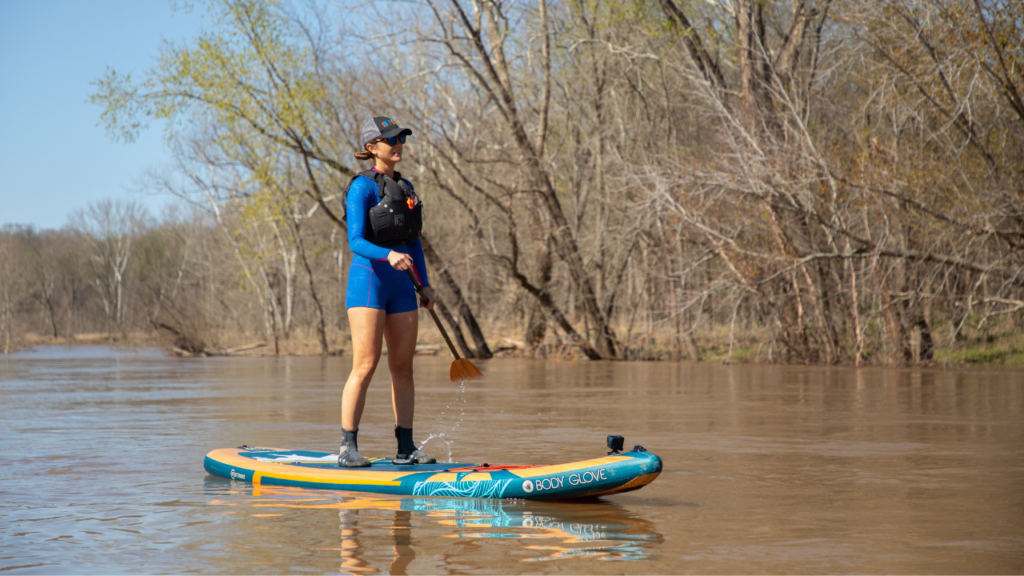
How can I be safe paddleboarding?
One of the best things you can do is to take the free, online course put on by the American Canoe Association and the U.S. Coast Guard. Paddling is generally a safe activity, but understanding what to do in tricky situations can really come in handy. So whether you're interested in canoeing, kayaking, stand up paddle boarding, or all of the above, click here to learn from the experts in paddling safety.
Shout-out to Body Glove for sponsoring this video/article
I had a chance to take the Body Glove Performer 11 SUP out for a spin a couple of times now, once for this demonstration, and once for a full top-to-bottom review. You can watch that full video here, but in a nutshell, the Performer 11 is a high-quality, inflatable SUP that doesn't have a high price (~$400 USD). The package comes with a 3-piece paddle, ankle leash, an electric pump and a hand-pump, a repair kit, and a backpack to carry it all in.
And that's all you need to know to get started with your stand up paddle board routine. I know you'll have a lot of fun getting acquainted with your board, making mistakes, developing your stability, getting some good workouts in, and just generally having a great time out on the water. If you enjoyed this article then make sure to check out PaddleTV for more paddling tips, gear reviews, and a whole host of Paddle Tales episodes.
Other paddling gear I use and recommend
NOTE: These are affiliate links where I'll earn a small commission if you make a purchase at no additional cost to you, but it's a great way to show your support. Thanks!
FOOTWEAR
PADDLING SHIRTS / TOPS
NRS H2Core Silkweight Long Sleeve Shirt
NRS Hydroskin Short Sleeve Shirt
PFD’S – LIFE JACKETS
OTHER PADDLING GEAR
PADDLING SHORTS/BOTTOMS
SUNGLASSES
VIDEO PRODUCED BY
Contact: info@heliconia.ca




